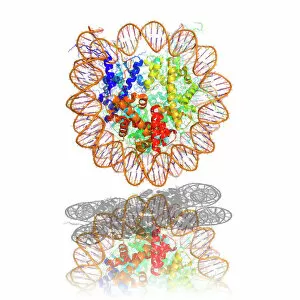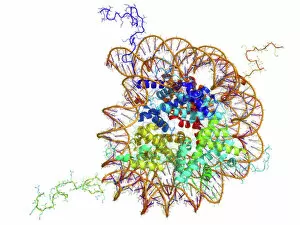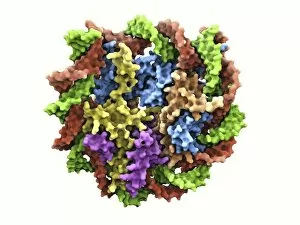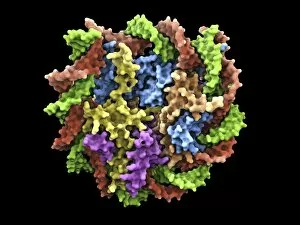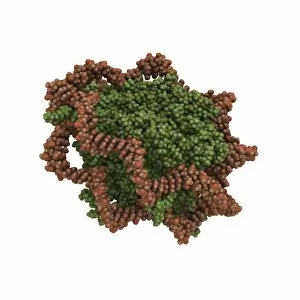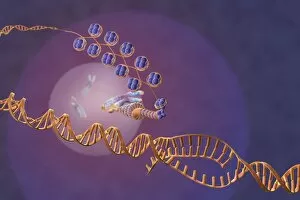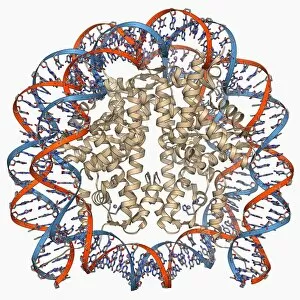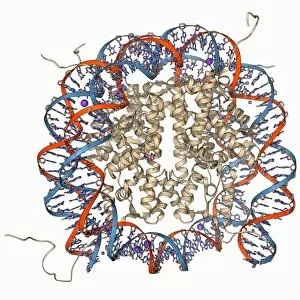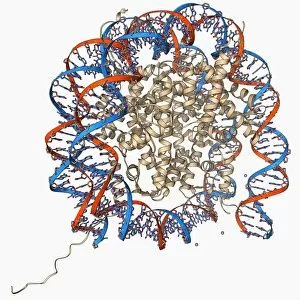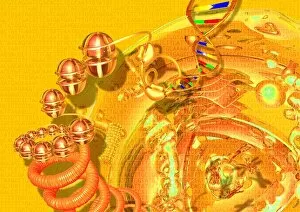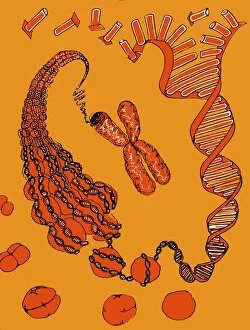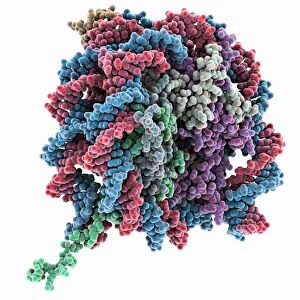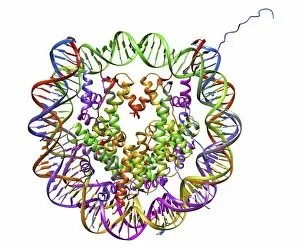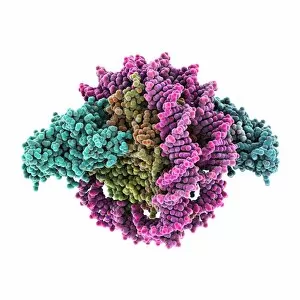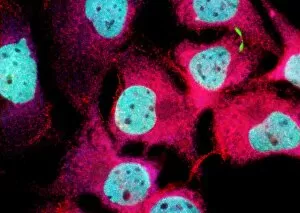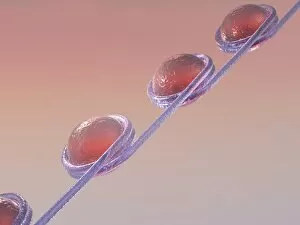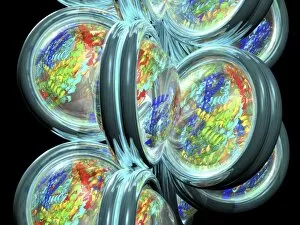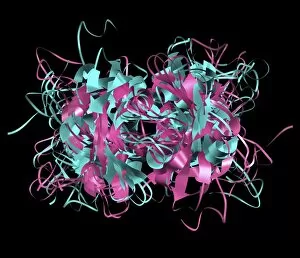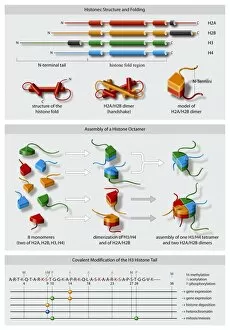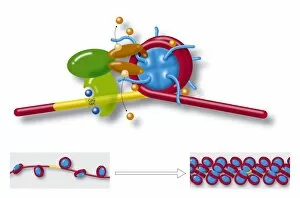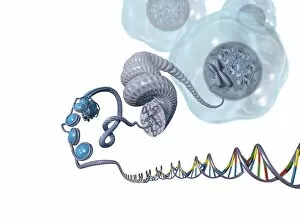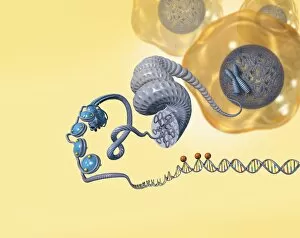Histone Collection
Histones are essential proteins that play a crucial role in DNA packaging and gene expression
For sale as Licensed Images
Choose your image, Select your licence and Download the media
Histones are essential proteins that play a crucial role in DNA packaging and gene expression. These nucleosome molecules, depicted in various molecular models like F007/9883 and F007/9888, form the building blocks of chromatin structure. The DNA wraps around these histone proteins to create a compact structure known as the nucleosome core particle bound to DNA. This intricate arrangement not only protects our genetic material but also regulates access to genes for transcription factors and other regulatory elements. Through their interactions with DNA, histones influence gene expression by either promoting or inhibiting the activation of specific genes. This artwork depicting gene expression beautifully captures the dynamic nature of this process, where histones act as key players in orchestrating precise control over which genes are turned on or off within our cells. Understanding the intricate relationship between histones and DNA is vital for unraveling the complexities of genetics and unlocking potential therapeutic interventions for diseases influenced by aberrant gene regulation.

